Muesli and Oatmeal look similar but have distinct tastes, textures, and habitat differences. Discover the nuances between these two popular foods in this informative guide.
Are you tired of the same old breakfast routine? Do you want to switch things up and start your day with a fresh and healthy alternative? Look no further than the ultimate breakfast battle between muesli and oatmeal! These two breakfast options have been vying for the top spot in terms of nutrition and taste. But which one should you choose? In this article, we will explore the nutritional benefits, taste profiles, and potential health impacts of muesli and oatmeal. Whether you prefer a cold and crunchy breakfast or a warm and comforting meal, we will help you make an informed choice. Join us as we dive into the ultimate breakfast battle and decide which one reigns supreme – muesli or oatmeal?
Also Read: Cereal vs Oatmeal: Which is the Superior Breakfast?
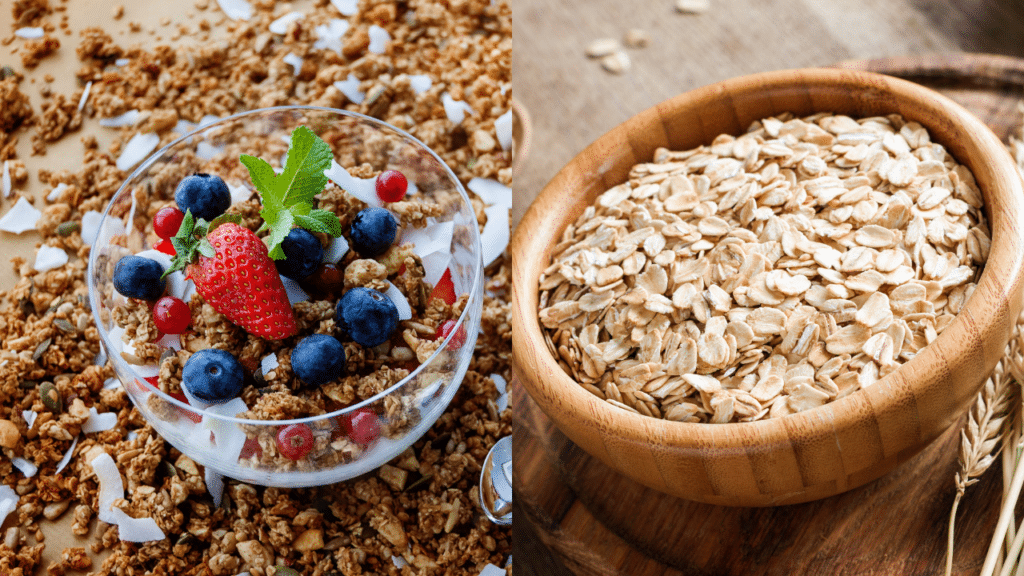
Contents
What is Muesli?
Muesli is a versatile and nutritious breakfast dish that consists of rolled oats, dried fruits, nuts, seeds, and sometimes grains or other cereals. It is often mixed with yogurt, milk, or fruit juice and left to soak for a brief period before consumption.
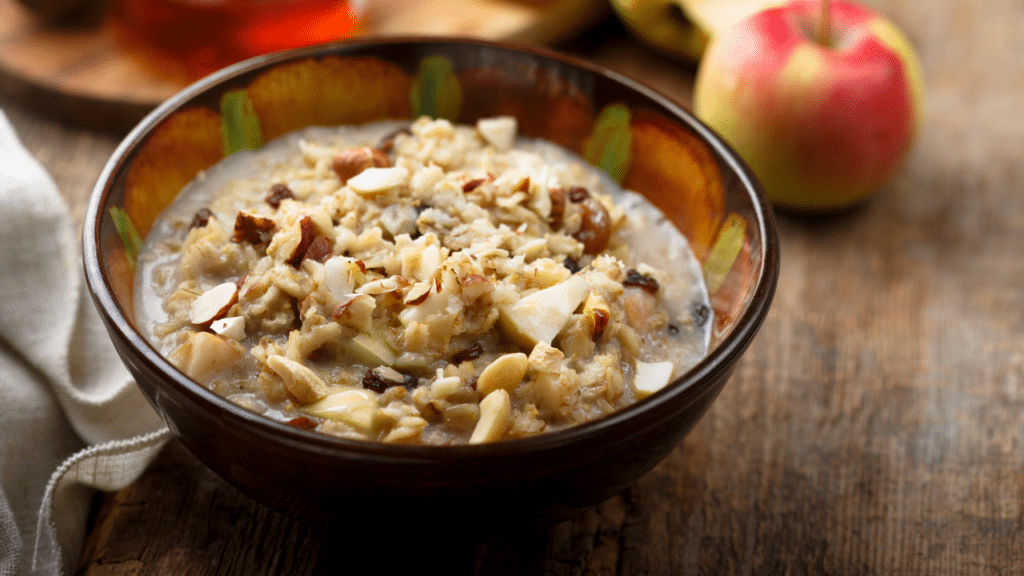
What is Oatmeal?
Oatmeal is a porridge made from oats, which are a type of cereal grain. Oats come in various forms, including rolled oats, steel-cut oats, and instant oats. Oatmeal is a popular and nutritious breakfast dish that can be prepared in different ways.
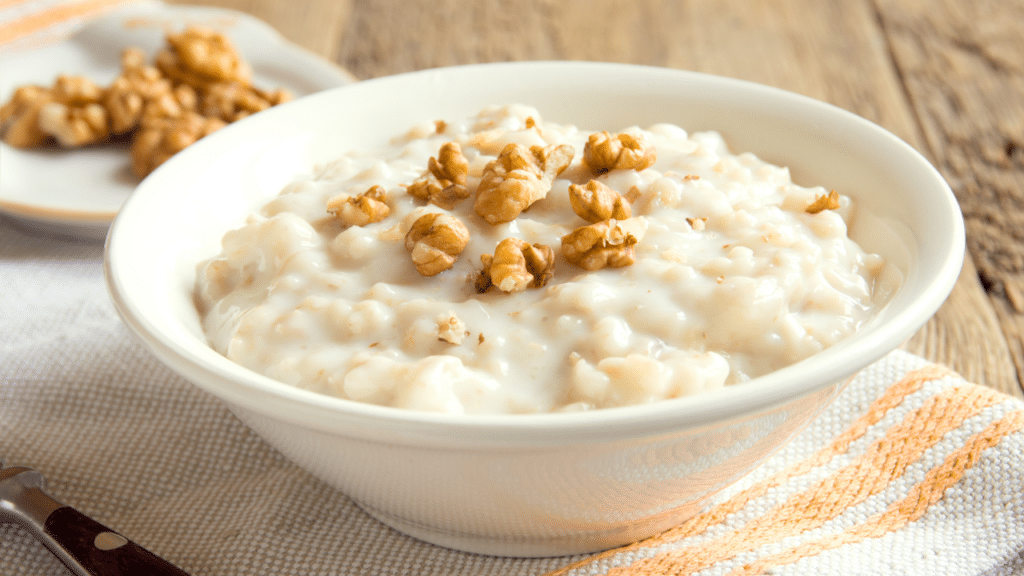
Overview Of Muesli vs Oatmeal
| Feature | Muesli | Oatmeal |
|---|---|---|
| Base Ingredient | Combination of rolled oats, nuts, seeds, and dried fruits. | Oats (rolled, steel-cut, or instant oats). |
| Preparation | Served cold after soaking in liquid (milk, yogurt, or juice) for a short period. | Cooked with water or milk to create a warm porridge. |
| Texture | Often has a chewy texture, depending on the types of ingredients used. | The texture varies based on the type of oats used, ranging from creamy to chewy. |
| Cooking Time | No cooking is required; can be prepared the night before. | Cooking time varies, with instant oats being the quickest and steel-cut oats taking longer. |
| Nutritional Content | Contains a mix of carbohydrates, fibre, protein, healthy fats, and various vitamins and minerals. | Good source of fibre, providing nutrients like manganese, phosphorus, magnesium, and B vitamins. |
| Customization | Highly customizable with various fruits, nuts, seeds, and sweeteners. | Customizable with toppings like fruits, nuts, seeds, honey, or sweeteners. |
| Temperature Preference | Eaten cold, but can be warmed if desired. | Served warm, but can be enjoyed at room temperature or chilled. |
| Origins | Originated in Switzerland and was developed by Maximilian Bircher-Brenner. | Oats have been consumed for centuries, and oatmeal variations are found in many cultures worldwide. |
| Health Benefits | It provides a good balance of nutrients and is often considered a healthy breakfast option. | It is known for its nutritional benefits, including heart health and blood sugar regulation. |
| Convenience | Convenient for those who prefer a no-cook breakfast option. | Requires cooking, but instant oats provide a quicker option. |
| Popular Variations | Various types with different combinations of ingredients, such as fruit muesli or nutty muesli. | Varieties include classic oatmeal, overnight oats, and flavoured instant oats. |
Also Read: Oats vs Oatmeal: Exploring the Differences and Benefits
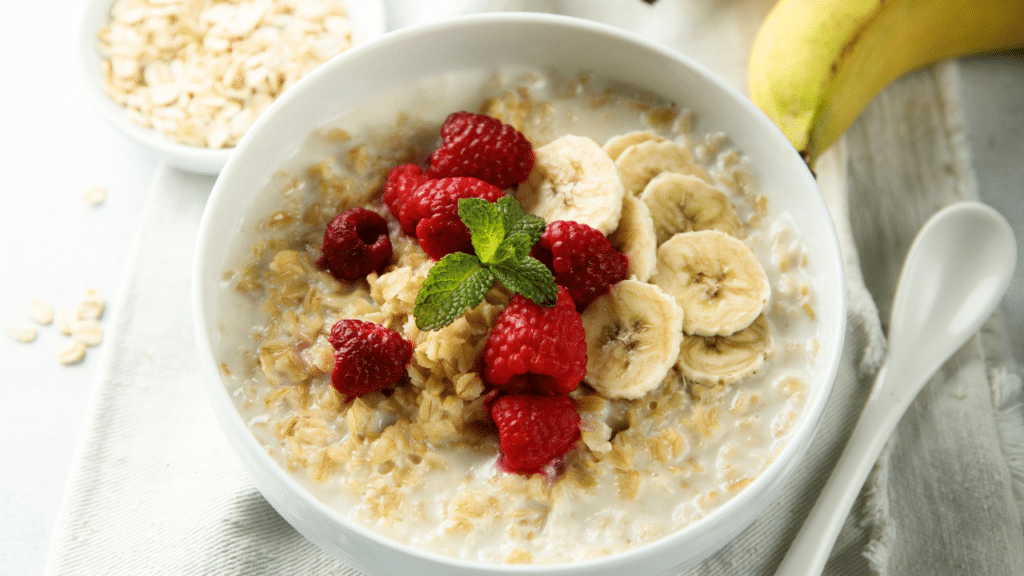
Detailed Differences Between Muesli vs Oatmeal
Composition and Ingredients
Comprises a mixture of rolled oats, nuts, seeds, and dried fruits. It may also include grains, like barley or wheat flakes. Primarily made from oats, which can be in the form of rolled oats, steel-cut oats, or instant oats.
Preparation
Served cold. It involves soaking in liquid (such as milk, yogurt, or fruit juice) for a brief period, allowing the oats to soften. Cooked with water or milk to create a warm porridge. The cooking time varies depending on the type of oats used.
Texture
Often has a chewy texture due to the combination of ingredients, such as nuts and seeds. The texture varies based on the type of oats used; it can range from creamy (with rolled oats) to chewy (with steel-cut oats).
Cooking Time
No cooking is required; it can be prepared the night before by allowing it to soak overnight. Cooking time varies—instant oats cook quickly, while steel-cut oats take longer.
Temperature Preference:
Eaten cold, but it can be warmed if desired. Served warm, but variations like overnight oats can be enjoyed at room temperature or chilled.
Customization
Highly customizable with various fruits, nuts, seeds, and sweeteners. Customizable with toppings such as fruits, nuts, seeds, honey, or sweeteners.
Origins
Originated in Switzerland and was developed by Maximilian Bircher-Brenner as a health food for patients. Oats have been consumed for centuries, and oatmeal variations are found in many cultures worldwide.
Health Benefits
Provides a mix of carbohydrates, fibre, protein, healthy fats, and various vitamins and minerals. Often considered a healthy breakfast option. It is known for its nutritional benefits, including being a good source of fibre and associated with heart health and blood sugar regulation.
Convenience
Convenient for those who prefer a no-cook breakfast option, it is suitable for busy mornings. Requires cooking, but instant oats provide a quicker option for those with limited time.
Popular Variations
Various types with different combinations of ingredients, such as fruit muesli or nutty muesli. Varieties include classic oatmeal, overnight oats, and flavoured instant oats, offering diverse options for taste preferences.
Also Read: Oat vs Soy Milk: Which Plant-Based Milk Is the Healthiest?
Which One is Better?
In my breakfast routine, the choice between muesli and oatmeal is a matter of personal preference and daily circumstances. When I’m craving a breakfast with a chewier texture and an array of crunchy elements, muesli is my top pick. I appreciate the convenience of simply soaking it in milk or yogurt the night before, making it a hassle-free, no-cook option for busy mornings. The cold or room temperature serving temperature is a refreshing start to the day, especially during warmer seasons.
On the flip side, there are mornings when the allure of a warm and creamy bowl of oatmeal is irresistible. The comforting aroma that fills the kitchen as it cooks and the versatility to customize it with an assortment of toppings, from fresh fruits to nuts and honey, make oatmeal a cosy and satisfying choice. The quick preparation time, particularly with instant oats, is perfect for days when I have a bit more time to spare.
In terms of nutritional benefits, both muesli and oatmeal contribute to a balanced diet. The mix of nuts, seeds, and dried fruits in muesli provides a diverse range of nutrients, while oatmeal, being centred around oats, is associated with heart health and blood sugar regulation.
Muesli Recipe
Certainly! Here’s a basic muesli recipe, but keep in mind that muesli is highly customizable, so feel free to adjust the ingredients to suit your taste preferences.
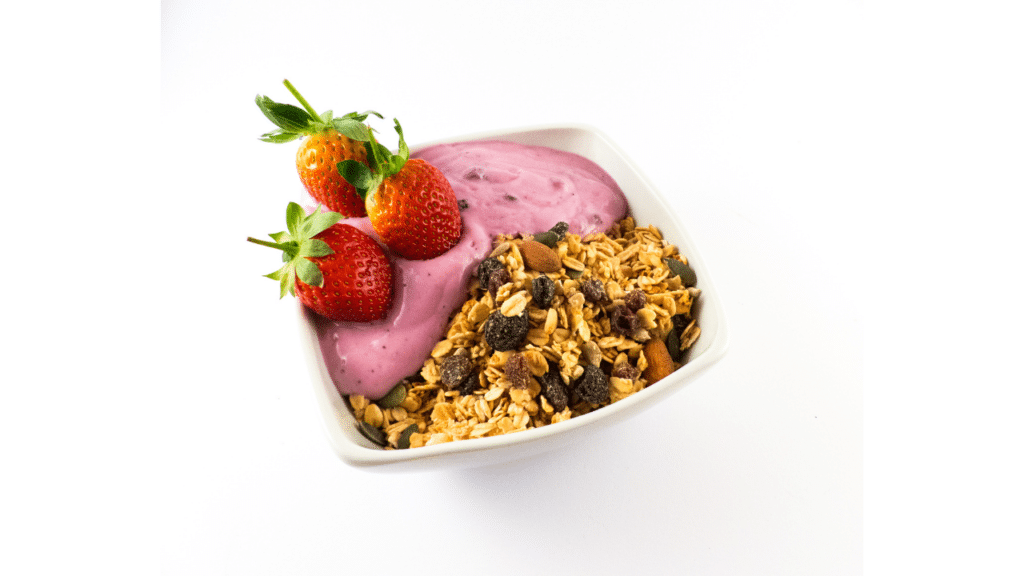
Ingredients
- 1 cup rolled oats
- 1/2 cup nuts (almonds, walnuts, or your choice), chopped
- 1/4 cup seeds (sunflower seeds, pumpkin seeds, flaxseeds, etc.)
- 1/4 cup dried fruits (raisins, cranberries, apricots, etc.), chopped
- 1-2 tablespoons honey or maple syrup (optional, for sweetness)
- 1 cup yogurt or milk (dairy or plant-based)
- Fresh fruits for topping (bananas, berries, apple slices, etc.)
Instructions
Combine Dry Ingredients:
- In a mixing bowl, combine the rolled oats, chopped nuts, seeds, and dried fruits. Mix well to ensure an even distribution of ingredients.
Add Sweetener (Optional):
- If you prefer a sweeter muesli, drizzle honey or maple syrup over the dry mixture. Adjust the amount based on your sweetness preference. Mix thoroughly to coat the ingredients evenly.
Store or Serve Immediately:
- You can store the dry muesli mixture in an airtight container at room temperature for future use. Alternatively, proceed to the next step to enjoy it immediately.
Soak or Mix with Yogurt/Milk:
- If you prefer your muesli cold, you can soak the dry mixture in yogurt or milk for about 10-15 minutes or even overnight in the refrigerator. This allows the oats to soften and the flavours to meld. If you’re in a hurry, you can mix the dry muesli directly with yogurt or milk and enjoy it immediately.
Top with Fresh Fruits:
- Just before serving, add fresh fruits of your choice as a topping. This could include sliced bananas, berries, apple slices, or any fruits you enjoy.
Serve your muesli as a wholesome and customizable breakfast. You can also add extra toppings such as a dollop of yogurt, a sprinkle of additional nuts or seeds, or a drizzle of honey if desired.
Final Comment
Ultimately, my breakfast choice depends on the day, my mood, and the time I have available. Both muesli and oatmeal have earned their place in my breakfast repertoire, offering delicious and nutritious options to kickstart my mornings.